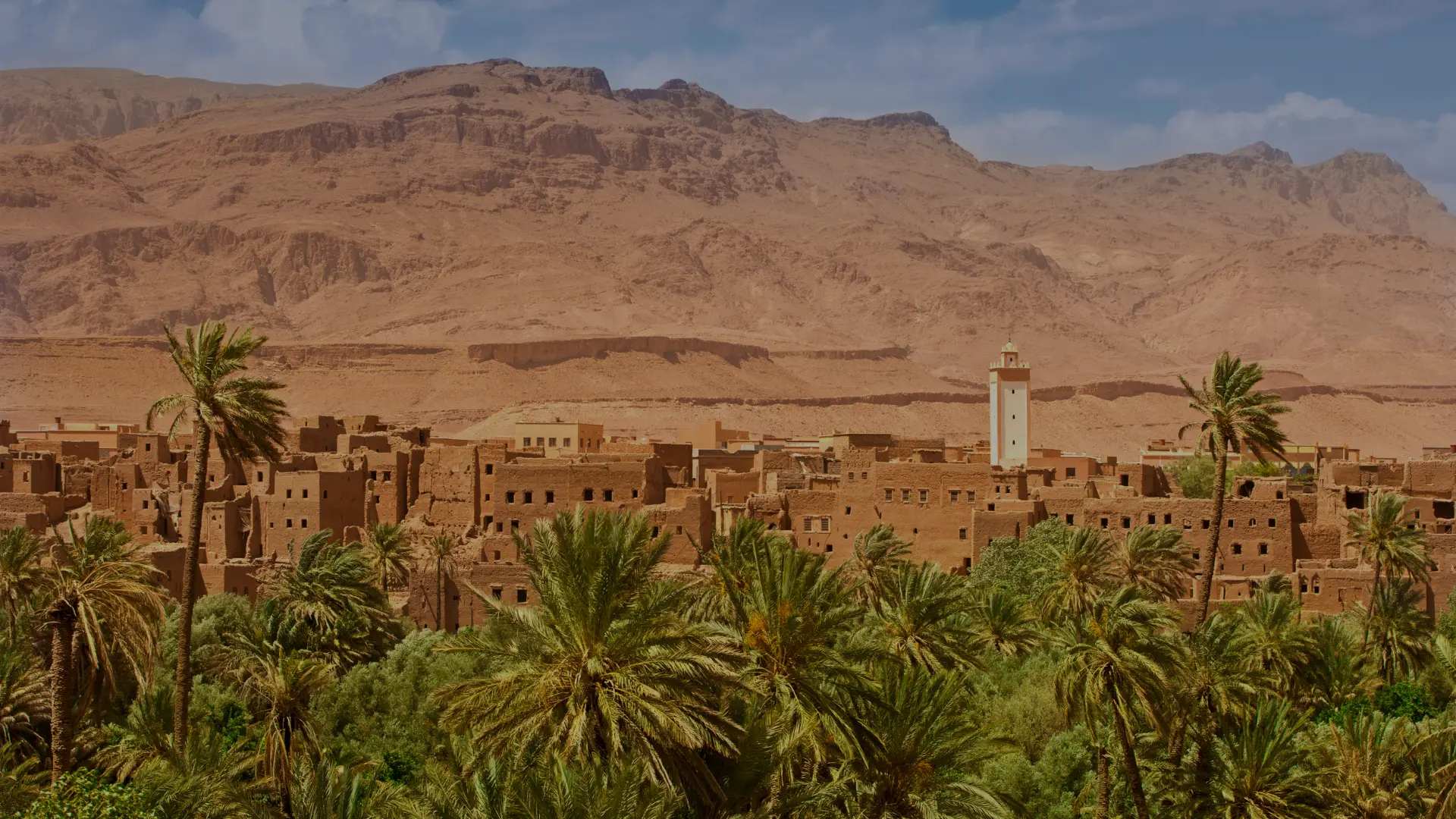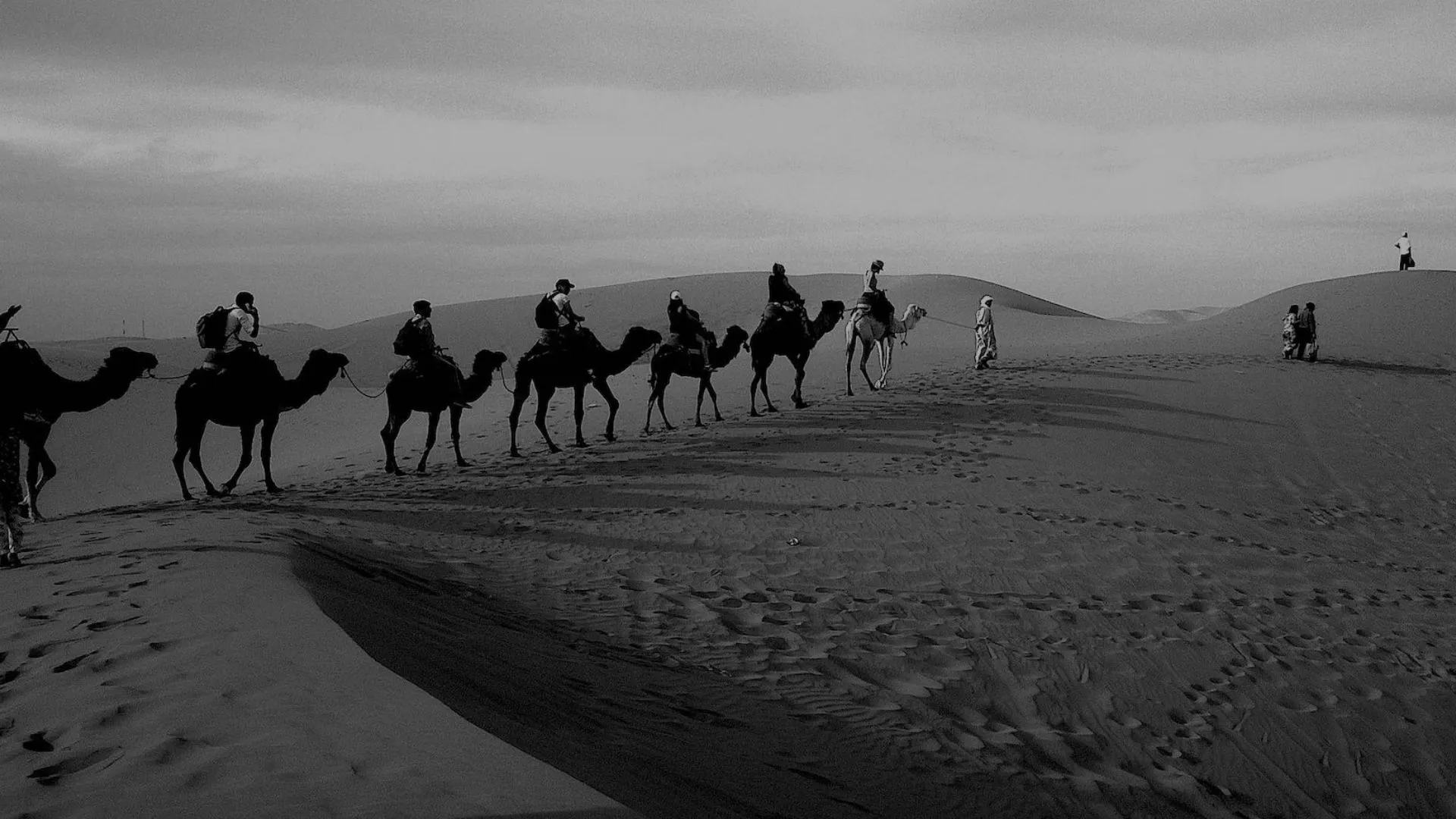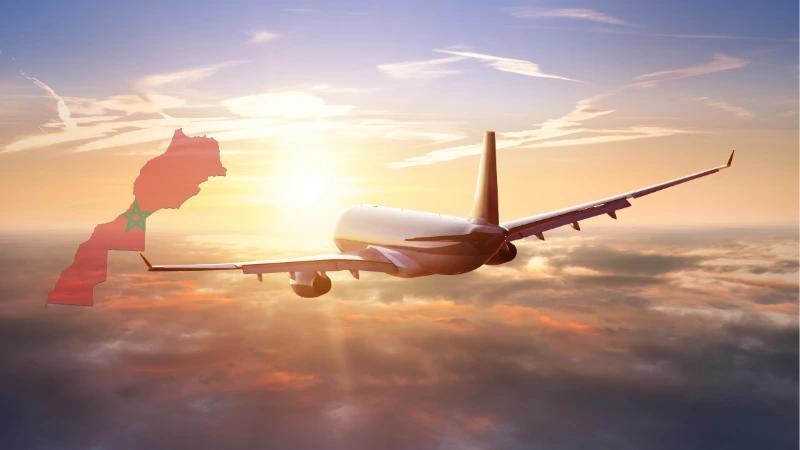When to Travel to Morocco? – A Seasonal Guide to Experiencing Morocco at Its Finest 2025
When to Travel to Morocco? Did you know that Morocco is a land of vibrant contrasts, where the golden sands of the Sahara Desert meet the snow-capped peaks of the Atlas Mountains? This North African gem is rich in history, culture, and natural diversity, revealing different faces depending on when you visit.
Knowing when to travel is not just about the weather; it’s about aligning your journey with the country’s soul. As you plan your trip, consider what Morocco has to offer across different times of the year. From the bustling medinas to the serene landscapes, each season brings its unique charm.
Whether you’re drawn to the vibrant festivals or the tranquil beauty of the desert, understanding the seasonal rhythm of Morocco is key to an unforgettable experience. Let’s explore the best times to visit this enchanting destination.
Table of Contents
ToggleMorocco’s Seasonal Tapestry: Understanding the Climate Variations
Understanding Morocco’s climate is key to planning your trip, as the country’s diverse landscapes create varied weather patterns. For those seeking an unforgettable experience, timing is crucial. Every season in Morocco brings a new dimension to its landscape, people, and customs.
When to Travel to Morocco? Geographic Diversity and Its Impact on Weather
Morocco’s geography is characterized by diverse landscapes, including the Atlas Mountains, the Sahara Desert, and coastal regions. This diversity significantly influences the country’s weather patterns. For instance, the Atlas Mountains can experience cold winters with snowfall, while the Sahara Desert is known for its scorching hot temperatures during the day and cooler nights.
| Region | Winter | Spring | Summer | Autumn |
|---|---|---|---|---|
| Atlas Mountains | Cold, Snowfall | Mild | Warm | Cool |
| Sahara Desert | Cool Nights, Warm Days | Hot | Very Hot | Warm |
| Coastal Regions | Mild | Mild | Warm | Mild |
Year-Round Climate Overview
Morocco’s climate varies from Mediterranean to desert, depending on the region. Winters are generally mild, especially in coastal areas, while summers can be hot, particularly in the desert regions. Spring and autumn are considered the best seasons to visit, with pleasant temperatures across most of the country.
Here’s a brief overview of what to expect:
- Spring (March to May): Pleasant temperatures, blooming landscapes.
- Summer (June to August): Hot in the desert, warm in the mountains and coastal areas.
- Autumn (September to November): Comfortable temperatures, harvest season.
- Winter (December to February): Cool to cold, especially in the mountains.
Spring in Morocco: A Blooming Desert Experience (March-May)
https://www.youtube.com/watch?v=iJxSpjrWEug
You can experience the best of Morocco during spring, from blooming desert landscapes to lively city atmospheres. As the cold winter months fade away, Morocco awakens with mild temperatures and vibrant cultural festivals.
Weather Patterns and Temperatures
During spring, Morocco enjoys pleasant weather, with average temperatures ranging from 64°F to 75°F (18°C to 24°C). The coastal regions remain mild, while the inland areas warm up gradually. The Atlas Mountains still have a dusting of snow, creating a beautiful contrast to the blossoming valleys below.
Must-Visit Spring Destinations
Some of the top destinations to visit during spring in Morocco include:
- Marrakech, with its bustling souks and vibrant cultural scene
- The Ourika Valley, known for its stunning mountain scenery and picturesque villages
- The Sahara Desert, where you can experience the magic of a desert bloom
A comparative look at these destinations is provided in the table below:
| Destination | Highlights | Activities |
|---|---|---|
| Marrakech | Bustling souks, vibrant cultural scene | Explore souks, visit historical sites |
| Ourika Valley | Mountain scenery, picturesque villages | Hiking, visiting local villages |
| Sahara Desert | Desert bloom, serene landscapes | Desert camping, camel rides |
Cultural Festivals and Events
Spring in Morocco is also a time for cultural festivals and events. The Marrakech Popular Arts Festival is a highlight, showcasing traditional music, dance, and crafts. Additionally, the Epidemia festival in Essaouira celebrates music and art, attracting visitors from around the world.
Summer Travel to Morocco: Navigating the Heat (June-August)
While the summer sun beats down on Morocco, the country’s coastal towns and mountain retreats offer refreshing escapes. Summer in Morocco, spanning from June to August, is characterized by high temperatures, especially in the inland areas. However, with some planning, you can enjoy the rich cultural heritage and diverse landscapes that Morocco has to offer.
Coastal Retreats and Mountain Escapes
For those looking to escape the heat, Morocco’s coastal towns such as Essaouira and Taghazout provide a cool respite, thanks to the Atlantic breeze. Alternatively, the Atlas Mountains offer a cooler climate and a range of outdoor activities, from hiking to exploring traditional Berber villages.
Summer Festivals and Cultural Experiences
Summer is a great time to experience Morocco’s vibrant culture, with various festivals taking place across the country. The Mawazine Festival in Rabat is a highlight, celebrating music, arts, and culture. Additionally, the Essaouira Gnawa Music Festival showcases the unique Gnawa culture, with its soulful music and dance.
Tips for Handling the Moroccan Summer Heat
To make the most of your summer travel to Morocco, it’s essential to stay cool and hydrated. Here are a few tips: stay hydrated by drinking plenty of water, avoid traveling during the hottest part of the day, and wear light, breathable clothing. Additionally, consider visiting air-conditioned attractions or relaxing in shaded areas during the peak heat hours.
By understanding Morocco’s climate and cultural calendar, you can craft an immersive and purposeful itinerary for your summer travel to Morocco.
Fall in Morocco: The Golden Season (September-November)

The fall season brings a sense of serenity to Morocco, with comfortable temperatures and a plethora of cultural festivals to explore. As the scorching summer heat fades away, the country’s diverse landscapes become even more inviting, making autumn an ideal time to visit.
Perfect Weather for Desert Excursions
Fall is considered one of the best times to visit Morocco’s Sahara Desert. The weather is mild and pleasant, with average temperatures ranging from 64°F to 75°F (18°C to 24°C), making it perfect for desert excursions and outdoor activities. You can enjoy camel treks, explore the Erg Chebbi dunes, or simply relax in the serene oases of the Sahara.
Key benefits of visiting the Sahara in fall include:
- Comfortable temperatures for outdoor activities
- Stunning sunsets and sunrises in the desert
- Opportunities to experience local Berber culture
Harvest Season and Culinary Experiences
Fall is also the harvest season in Morocco, offering a range of culinary delights to savor. You can indulge in fresh produce, such as oranges, olives, and dates, and experience the local cuisine, which is heavily influenced by the country’s rich agricultural heritage. Be sure to try traditional dishes like tagines and couscous, often made with freshly harvested ingredients.
Some of the culinary highlights of fall in Morocco include:
- Tasting fresh dates and oranges in local markets
- Enjoying traditional Moroccan cuisine with seasonal ingredients
- Visiting olive groves and learning about olive oil production
Fall Cultural Events and Festivals
Morocco is known for its vibrant cultural scene, and fall is no exception. The season is marked by various cultural events and festivals, showcasing the country’s rich heritage. You can attend festivals celebrating music, dance, and local traditions, providing a unique insight into Moroccan culture.
Some notable fall events include:
- The Marrakech International Film Festival
- Cultural festivals in Fez and Meknes
- Traditional music and dance performances in Essaouira
Winter Wonders: Morocco’s Diverse Cold Season (December-February)
Morocco in winter is a treasure trove of diverse experiences, from snowy mountains to sunny deserts. As you plan your trip, you’ll find that the country’s varied climates and landscapes offer something for everyone during the colder months.
Skiing in the Atlas Mountains
The Atlas Mountains transform into a ski resort during winter, attracting enthusiasts from around the world. With several ski resorts, including Oukaïmeden and Mischliffen, you can enjoy a range of slopes suitable for different skill levels. The ski season typically runs from December to March, offering a unique winter sports experience in Africa.
Winter Sun in Southern Morocco
While the north experiences cooler temperatures, southern Morocco remains pleasantly warm during the winter. Cities like Marrakech and destinations in the Sahara Desert offer a warm winter getaway, perfect for escaping colder climates. Enjoy pleasant temperatures, explore the vibrant souks, and take in the breathtaking desert landscapes.
Winter Festivals and Holiday Celebrations
Morocco celebrates various festivals and holidays during the winter, adding to the country’s vibrant cultural scene. The New Year (January 1st) is celebrated with festivities, and the Almond Blossom Festival in February is a highlight, showcasing the country’s agricultural bounty. Participating in these events offers a unique insight into Moroccan culture.
| Activity | Location | Best Time |
|---|---|---|
| Skiing | Atlas Mountains | December to March |
| Desert Excursions | Sahara Desert | December to February |
| Almond Blossom Festival | Tafraoute | February |
As you plan your winter trip to Morocco, consider these diverse experiences to make the most of your visit. Whether you’re looking for adventure, cultural immersion, or simply a warm winter escape, Morocco has something to offer.
Essential Guide to Travel to Morocco During Ramadan
Understanding the nuances of Ramadan is crucial for travelers to Morocco, ensuring a respectful and enjoyable journey. As you plan your trip during this holy month, being aware of the cultural and religious practices will enhance your experience.
Understanding the Shifting Dates of Ramadan
Ramadan’s dates change annually based on the lunar calendar, so it’s essential to check the predicted dates before your trip. This Islamic calendar is about 11 days shorter than the solar calendar, causing Ramadan to shift each year. You can find the exact dates on reliable Islamic calendar websites or through local tourism information.
Cultural Etiquette During the Holy Month
During Ramadan, Moroccans fast from dawn to sunset. As a visitor, you are not required to fast, but you should be respectful of those who are. Refrain from eating, drinking, or smoking in public during daylight hours. This consideration will be appreciated by the locals and will make your interactions more positive. Additionally, dress modestly and be mindful of the local customs and traditions.
Unique Experiences and Considerations
Ramadan offers a unique opportunity to experience Morocco’s culture and spirituality. You can enjoy the vibrant atmosphere during Iftar (break-fast) meals, often held in Riyad (traditional houses with interior gardens) or public spaces. Some tour operators also offer special Ramadan tours, providing insights into the local culture and traditions. Be prepared for early morning Sahur (pre-dawn meal) and late-night festivities, and plan your activities accordingly.
Regional Guide: When to Visit Morocco’s Key Destinations
The best time to visit Morocco varies significantly across its different regions. Morocco is a country with a diverse geography, ranging from coastal areas to desert landscapes and mountainous terrains, each with its unique climate characteristics.
Marrakech and Central Morocco
Marrakech, known for its vibrant culture and bustling markets, is best visited during the spring (March to May) or autumn (September to November) when the weather is mild and pleasant. These periods are ideal for exploring the city’s attractions without the harsh summer heat.
Coastal Cities: Casablanca, Rabat, and Essaouira
The coastal cities of Morocco enjoy a Mediterranean climate, making them pleasant to visit year-round. However, the summer months (June to August) are particularly popular due to the warm weather and beach activities. Essaouira is known for its consistent winds during the summer, making it a favorite among surfers and windsurfers.
The Sahara Desert Experience
Visiting the Sahara Desert is a unique experience, best undertaken during the cooler months (October to February) to avoid the extreme heat of the summer. The temperatures can drop significantly at night, even in the winter, so it’s essential to pack accordingly.
Northern Morocco and the Rif Mountains
Northern Morocco, including the Rif Mountains, has a more temperate climate compared to the rest of the country. The spring and autumn seasons are the best times to visit this region, offering pleasant weather for hiking and exploring the scenic landscapes.
| Region | Best Time to Visit | Highlights |
|---|---|---|
| Marrakech and Central Morocco | Spring (March-May) or Autumn (September-November) | Mild weather, cultural festivals |
| Coastal Cities | Summer (June-August) | Beach activities, pleasant Mediterranean climate |
| Sahara Desert | Cooler months (October-February) | Desert excursions, stargazing |
| Northern Morocco and Rif Mountains | Spring (March-May) or Autumn (September-November) | Temperate climate, hiking, scenic landscapes |
Understanding these regional variations helps you plan your trip to Morocco more effectively, ensuring that you make the most of your time in this diverse and fascinating country.
Planning Your Travel to Morocco: Practical Considerations

To make the most of your trip to Morocco, it’s essential to consider several practical factors. Understanding these elements can help you navigate the country with ease, ensuring a memorable and stress-free journey.
Budget Considerations by Season
Morocco’s tourist season significantly impacts travel costs. During peak seasons, such as spring and fall, prices for accommodations and tourist activities tend to be higher. In contrast, the summer and winter months may offer more affordable options, but the extreme weather conditions might affect your plans. For morocco budget travel, consider visiting during the shoulder season when prices are more reasonable, and the weather is still pleasant.
Crowd Levels Throughout the Year
The number of tourists in Morocco varies by season. Spring and fall are the most popular times, with festivals and pleasant weather attracting large crowds. If you prefer fewer tourists, the winter months might be a better option, despite the cooler temperatures in the mornings and evenings. Summer can also be quite crowded, especially in coastal towns and mountain resorts.
Booking Accommodations and Activities
When it comes to planning travel to Morocco, booking your accommodations and activities in advance is crucial, especially during peak travel seasons. This not only ensures availability but can also help you secure better rates. Consider booking riads in Marrakech or other local accommodations that offer a more authentic experience. For activities, such as desert tours or mountain treks, advance booking is essential to avoid last-minute hassles or unavailability.
Additionally, be sure to research and book with reputable operators to ensure a smooth and enjoyable experience. Whether you’re looking for a relaxing stay or an adventurous trek, Morocco has something to offer for every kind of traveler.
Conclusion: Crafting Your Perfect Moroccan Journey
As you plan your travel to Morocco, understanding the country’s diverse climate and cultural events is crucial for an unforgettable experience. Morocco’s unique blend of traditional and modern attractions makes it a fascinating destination, but timing is everything.
Crafting your Moroccan journey requires careful consideration of the seasons, regional variations, and cultural festivals. Whether you’re looking to explore the vibrant cities, relax on the coast, or trek through the Atlas Mountains, Morocco’s diverse landscapes and cultures have something to offer every kind of traveler.
By following this Morocco tourism guide, you’re well on your way to creating a memorable journey. From the bustling souks of Marrakech to the serene dunes of the Sahara, Morocco is a country that will captivate your senses and leave you with lifelong memories. So, take the time to plan your trip according to your preferences, and get ready to immerse yourself in the magic of Morocco.

